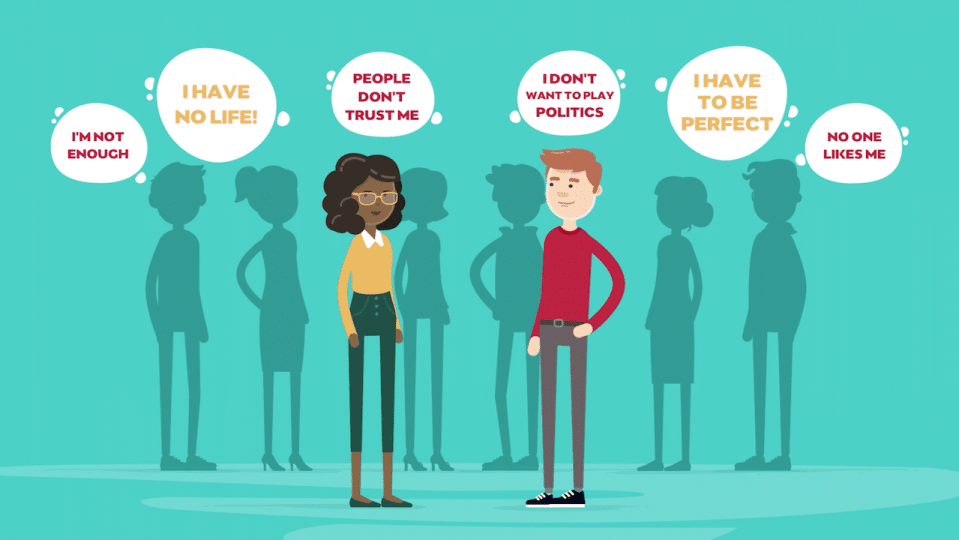What’s Getting In the Way — And What to Do About It
Why is it so difficult to turn good teams into great teams?
The need for high group intelligence and collaboration is compelling and clear: The Harvard Business Review recently published a study that found time spent in collaborative activities has increased by more than 50% over the past two decades. Today, the combined effort of many is more important than ever if businesses want to reach their goals, but it’s also important for leaders to understand what makes collaboration successful.
Charles Duhigg offers up a nice summary in this recent New York Times Magazine article on the quest by Google and other companies to build a perfect team. The bottom line is deceptively straightforward. Various studies such as Google’s Project Oxygen or work at MIT’s Center for Collective Intelligence Research have come to shared conclusions from different angles. Group intelligence and collective problem-solving excel in teams where:
- Everyone feels safe to speak to anyone else on the team, especially when team leaders role-model curiosity over defensiveness
- Social sensitivity among team members is high — in other words, people are aware of others’ needs, the impact their behavior has on them, and care enough to accommodate how they interact
- No one dominates the discussion, which involves an equitable sharing of airtime, self-monitoring about how much I speak vs. listen, a willingness to give the talking stick to others — and an effort to do so quickly after having made my point
- People show genuine interest in the personal well-being and professional development interests of their collaborators.
What’s getting in the way
The problem with collaboration and collective problem-solving is that it cannot be mandated. People choose to cultivate and live the right behaviors — or they don’t. And they may not be able to make the choice because of limited self or social awareness.
Increasing collaborative capacity is not primarily a skill-building challenge. Instead, all of the following need to align in order to make it happen: the right culture that elicits goodwill, intrinsic motivation to grow self-awareness, and the building of interpersonal skills, such a having difficult conversations.
As an executive coach having done hundreds of organizational assessments and team interventions, I find the biggest obstacles to helping teams become great are:
- The team isn’t the central focus of coaching. Practical wisdom tells us that the chain breaks at the weakest link, but you don’t make a system stronger by focusing on one part. Yet that’s what most organizations do — they coach individuals instead of coaching the team
- There is dishonesty or overconfidence about how much people on the team can or will speak their mind. It takes time to grow trust and credibility. Without these, it’s hard to discuss the full range of perspectives. As a leader, you can’t just say: “Okay, let’s talk openly about the issue.” After running hundreds of focus groups in organizations, I rarely see that those who hold formal (or informal) power see the issues in the same light or to the same degree as others. I have seen leaders and HR professionals who are in the business of listening, but who don’t listen to understand. Such blind spots are hard to remedy
- The effort required to build healthy, sustainable, collaborative behaviors is grossly underestimated.
Behavior change in adults is one of the toughest projects imaginable. You have to know what you want to change. You have to decide that you want to change. And you have to know what to do instead of when. We need motivation, accountability partners, repetition, positive role-modeling, and encouragement. An annual offsite training is good for a lot of things — but not enough to support sustainable behavior changes.
What We Can Do About It
My research, which you can read about here, looks at why so few teams make it from sufficient performance to the next level of high-performance. For some teams, individual styles and preferences just magically line up. It happens, but it’s rare. For all other teams, here is what needs attention:
- Expand to a systemic team coaching approach beyond just individual coaching. Design coaching processes that include both individual and group sessions, and make sure one of the key priorities of the individual coaching is on building self-awareness, empathy, and helping individuals align their self-concepts with how they are perceived by others
- Consider improving collective problem-solving with an on-going interpersonal challenge — more so than an intellectual one. Collective problem-solving involves taking social risks: How safe is it to voice dissent? Can I criticize my boss? How about disagreeing with the cool in-group? Can I open up a discussion that others just want to move beyond? Without a fair degree of psychological safety, problem-solving stalls or devolves into groupthink. With that changed frame of mind, plan accordingly. Institute regular team check-ins that address actual interpersonal dynamics in the group, including, for instance, whether team members are getting equal “air time” and if they are not, discuss what is actually happening and the impact on the team. Address behaviors that erode psychological safety, such as sharp personal criticism, defensiveness, blame, lacking accountability and attitudes of superiority. Conduct 360 reviews on an annual basis and invite team members to share highlights and intentions with each other
- Be in it for the long run. Significant improvements can be made within 9-12 months when sincere individual and collective efforts are made and accountability check-in are frequent and regular
The beauty of supporting a team’s development is that the work will elicit a multitude of positive outcomes for the team, its members, and the organization. A more healthy, socially attuned team will not only yield more creative, productive results in the long run, but team members will enjoy themselves and collaborate a whole lot more. When this happens, a universe of possibilities opens up.
I am contributing writer at Forbes. You can follow me here.

